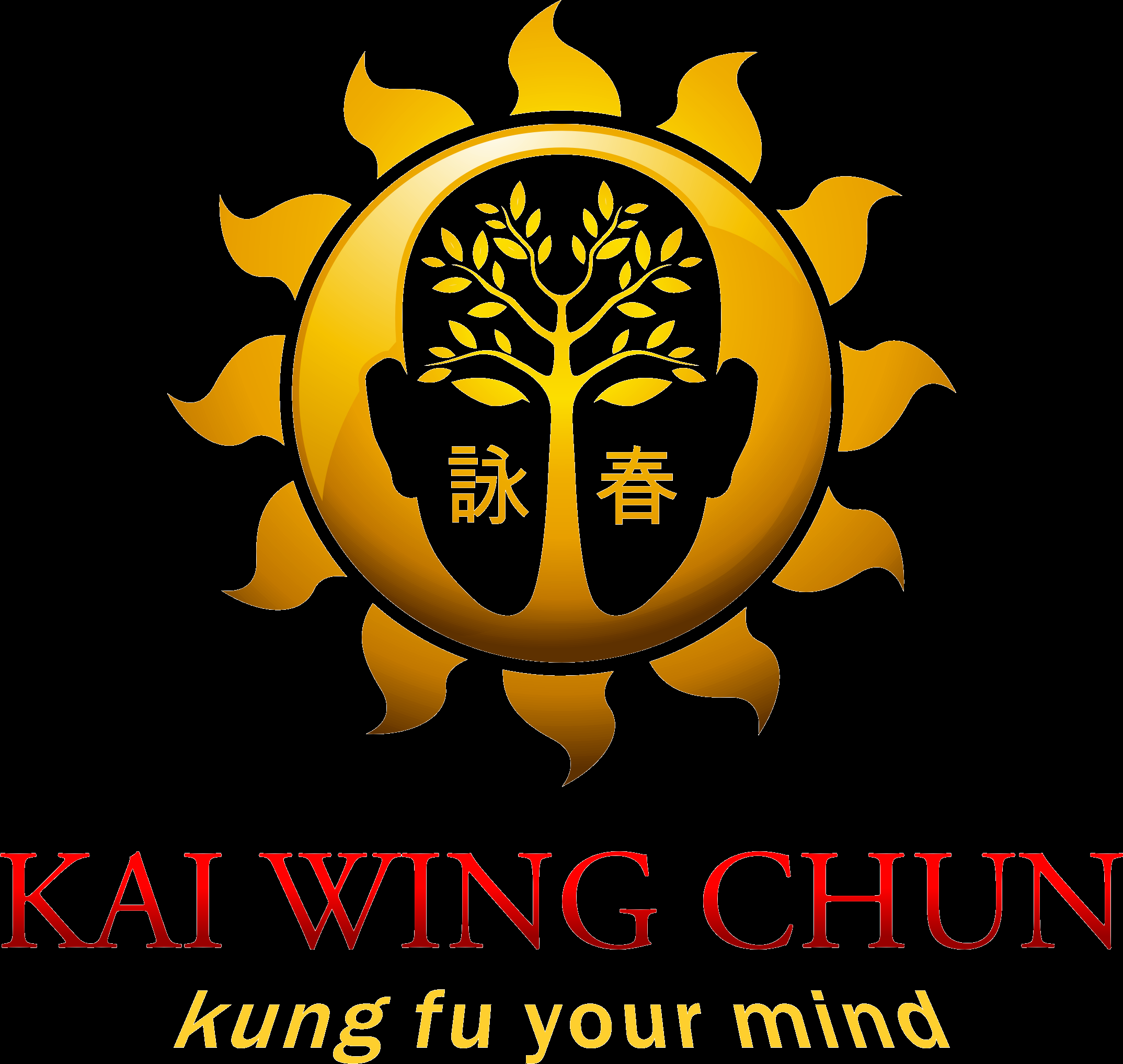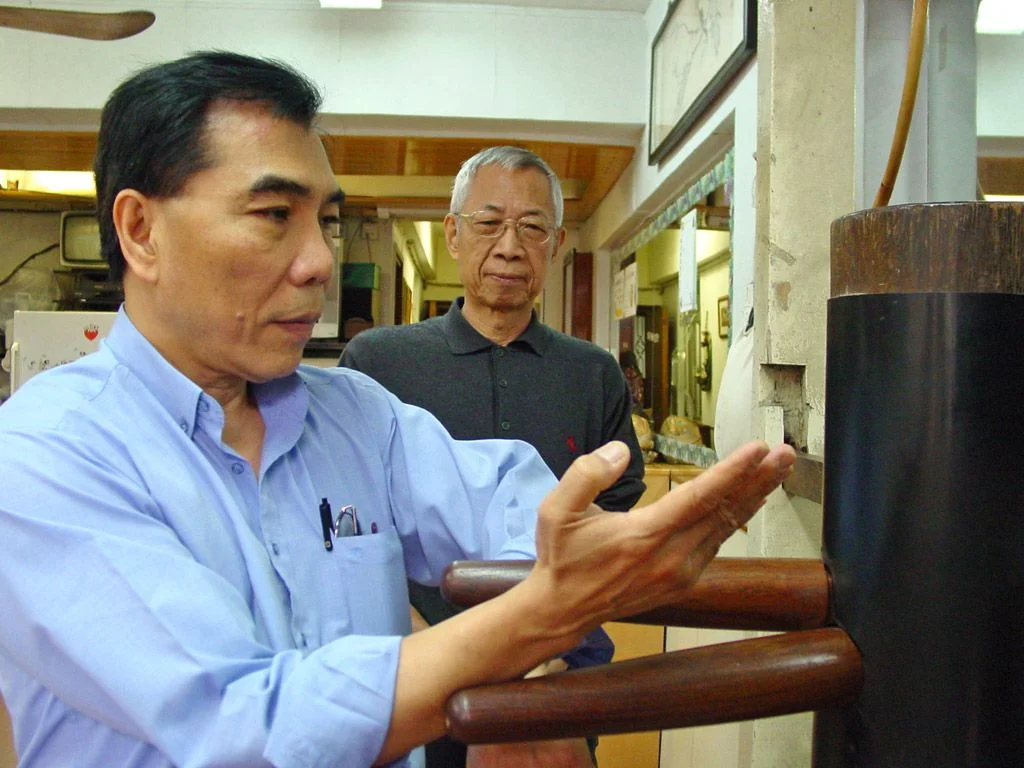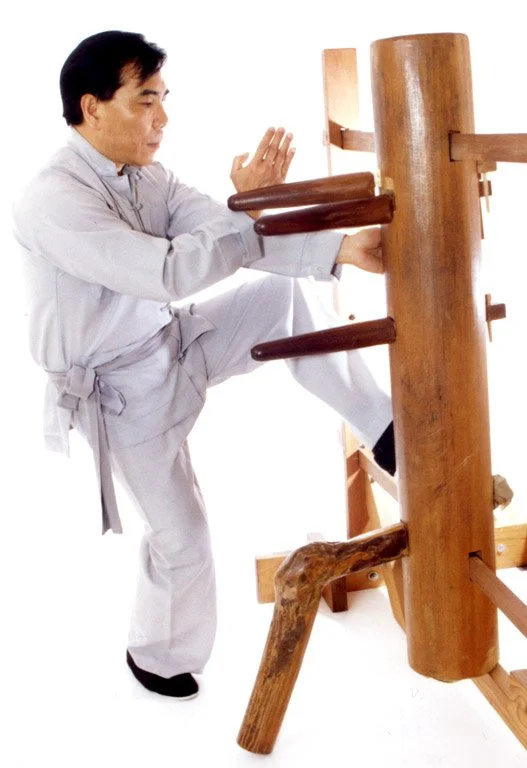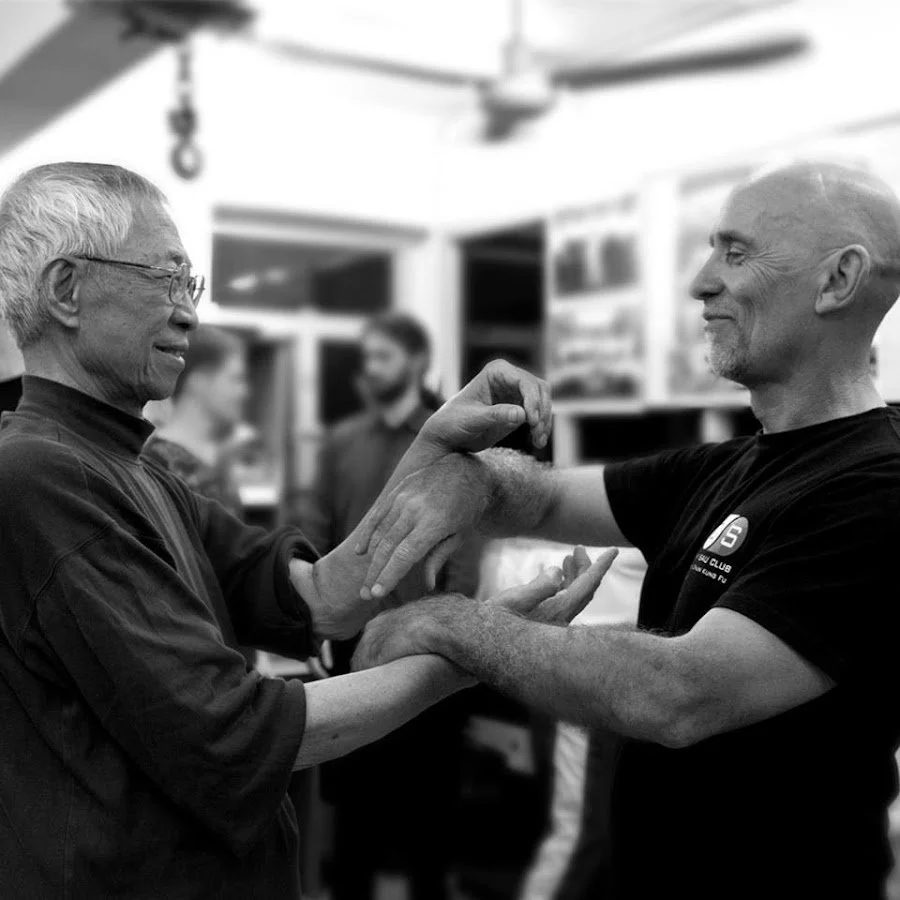Qualifications
TLDR: 23 years learning and teaching Wing Chun, including three years full time under Sifu Jim Fung, and three years full time under Sigung Chu Shong Tin.
My Wing Chun Journey Started When…
I was living in Perth, Western Australia, just out of secondary school, and I asked myself, “What do I want to do with my life?” I wasn’t sure what to do with all of it, but I was sure about one thing: I wanted to do martial arts.
I signed up for many martial arts classes, wanting to give myself a broad exposure before dedicating myself to one. I did Taekwondo, boxing, fencing, aikido, capoeira, systema, jujitsu —- then I discovered Wing Chun, and it was love at first sight.
A few months into my training, I was googling about Wing Chun and I came across something that seemed too good to be true: a government-accredited tertiary accreditation in Wing Chun instruction!
The government would pay me to learn Wing Chun?
The only catch was the course was starting next week and was in Sydney. I wish I could say the decision was hard to make. But five days later I was on the other side of the continent ready for the Monday 9 am class at the International Wing Chun Academy in Sydney’s Chinatown, the first student through the door.
Certificate IV in Wing Chun Instruction
At the International Wing Chun Academy (IWCA), I trained 60+ hours a week for three years, and 20 hours a week teaching as a Sihing or Instructor. I learnt a lot from this period from dozens of great instructors. I am in regular contact with the many friends I made during this idyllic time.
Sifu Jim Fung liked to demonstrate his powerful one-inch punch on me if I was by the front desk and potential customers had come in. He would strike me, I would fly back over a meter, hit the wall, and then slide down it! Sifu Jim had swift and powerful hands!
I met my grandmaster, my Sigung, Chu Shong Tin, about nine months into training at the IWCA. Annually he would come to the IWCA and give a week of seminars. These seminars contained a lot of theory in highly concentrated form, and I attended SEVENTY-FIVE hours of seminars!.
At these seminars, I found that Sigung would like to combine theory with a demonstration on the inquirer and then an attempt to get the inquirer to do this themselves. Once I noticed this pattern, I wasn’t shy in asking questions! These seminars provided the theoretical foundation for my training in Australia. And put me in an excellent position to later learn rapidly from Sigung’s daily instruction when I lived in Hong Kong.
If you click on the video below, you’ll see a video from one of the 2005 seminars. I ask Sigung, “How does the Dummy form help with Realistic Fighting?”
Once I became an instructor, I continued to teach for several years until Sifu Jim’s passing away. His school continues to thrive under his son, Sifu Tristan Fung. Click the link below to see the International Wing Chun Academy website.
Certificate IV in Fitness Leaders
While training to get my CIV in Wing Chun Instruction, I also got this Personal Trainer qualification. I learnt a lot about anatomy and biomechanics from this course. I was lucky that the knowledgeable, practical, and enthusiastic Sports Scientist and Wing Chun Instructor Kevin Troeger ran the course.
Click the link to read How To Become A Fitness Expert — A Word From A Senior Fitness Professional, one of many articles Kevin has written for the Australian Institute of Fitness.
Bachelor of Science,
Double Major in Philosophy and Psychology,
with Distinction
I didn’t know if I wanted to be an academic philosopher or psychologist, so I majored in both.
Before going to university, I had researched and practised eastern philosophy and meditation.
At university, I learnt western philosophy. One philosophy I studied was Stoicism, which some called Western Buddhism, and I found a lot of overlap and synergies.
I also studied psychology, a vast field whose scope covers neurons, brains, emotions, cognition, social dynamics, and much more. I remain an avid pupil of the human condition.
I learnt a lot during this period. I graduated with Distinction. But I no longer wanted to be an academic. Wing Chun still called to me.
Training at the Chi Sau Club under Sifu Mark Spence
All through my studies, I continued to train in Wing Chun, first at the IWCA, but then after the passing of my Sifu with his most talented and experienced student in Sydney, Mark Spence.
All through my studies, I continued to train in Wing Chun, first at the IWCA, but then after the passing of my Sifu with his most talented and experienced student in Sydney, Mark Spence.
This was a difficult time for me. I dealt with grief from my father’s recent passing while I struggled with studying and working full time. I found my weekly private lesson with Mark, and the long, relaxed group classes centred me in difficult times.
Mark is famous for his skill in Chi Sau, and each roll with Mark is an education. Mark’s careful attention to the forms of Siu Nim Tau during our privates was precious to me.
I was studying at university and was slowly realising that though I was succeeding academically, Wing Chun called to my soul. After completing my studies, I went on one of Mark’s frequent trips to Hong Kong to train with Sigung Chu for a week. This experience completely clarified my goals— I would return to Sydney to pack and arrange to move to Hong Kong. I would move thousands of kilometres to pursue Wing Chun for the second time.
My “PhD” in Wing Chun
Sigung Chu was suffering from cancer at the time, and knowing how lucky I was to be learning from him and that my training would be cut short with him, I dedicated myself wholly to training under him. I was having certain problems with my development in Wing Chun that I had not been able to transcend in Australia no matter my hard work or the skill of my teachers. All of them would be the first to say that Sigung’s ability to diagnose what specific problem a student was having was second to none.
Within six months he had helped me fix a major problem with my stance; within nine what the essence of relaxation is; within a year the beginnings of shoulder power; and within two years I was able to find and use my centre. Of course, it is impossible to list all that I learnt in this time.
Without the three years I spent in Hong Kong, I am convinced I would not have made progress on the above areas, and too many other areas to count. I am convinced I would have been forever stuck at a plateau in my training. All I know—and will know—in Wing Chun I ultimately owe to Sigung, and I will be forever grateful to him.
I call this period my “PhD” in Wing Chun because I learnt from the best in the world on the entire Wing Chun system. If I had never gone to Hong Kong to train with Sigung, I strongly suspect I would not have the tools to continue my growth in Wing Chun. Though I have much to learn (when someone asked Sigung how long it takes to master Wing Chun, his answer was one and a half lifetimes), I don’t have the fear that any future obstacles can’t be overcome with time and effort.
Also, I learnt about how to be a teacher from Sigung. Not only did I get to receive his personal assistance with each day of training, I saw him customise his instruction to each pupil, and I learnt much from this.






